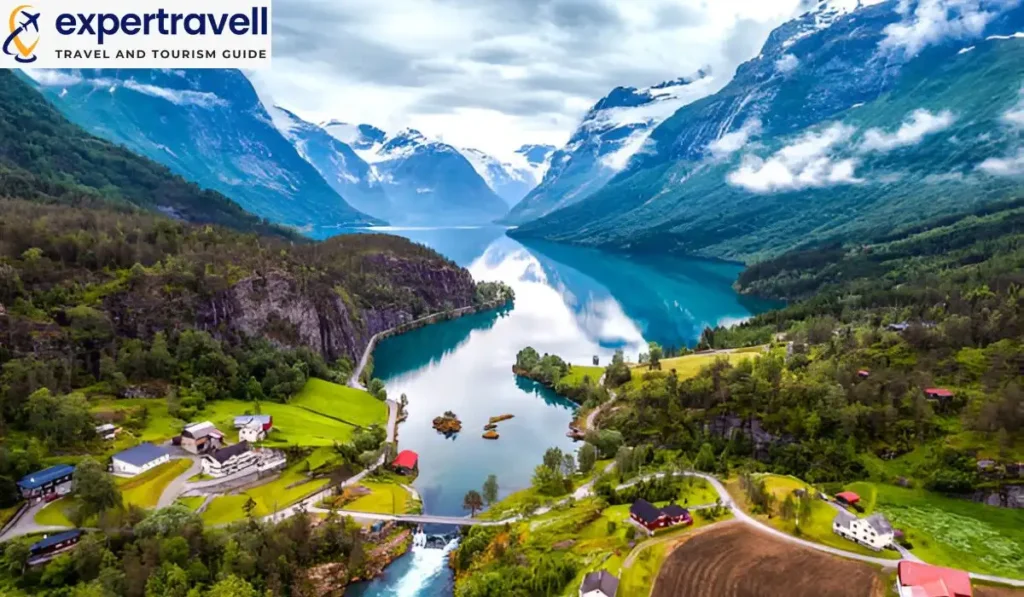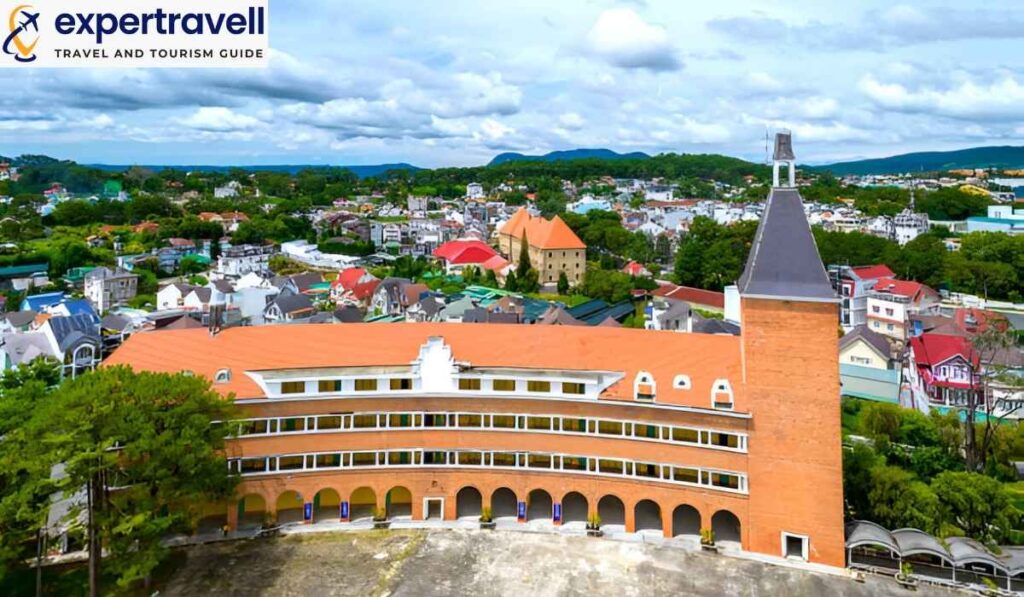Stavanger, Norway, blends urban charm with natural beauty, offering colorful wooden houses, fascinating museums, and access to stunning fjords. A day in Stavanger can include exploring Old Stavanger’s historic streets, visiting museums like the Norwegian Petroleum Museum, and enjoying views of the surrounding landscape.
Nature lovers can stroll around Breiavatnet Lake or take a short ferry to Flor & Fjære garden island. For adventure, popular day trips to nearby fjords and natural wonders are easily accessible. Stavanger’s vibrant festivals and events make it a memorable destination for all types of travelers, much like the scenic village of Flåm.
Where To Stay In Stavanger
Stavanger offers a range of accommodation options to suit different budgets and preferences. From luxury hotels to cozy guesthouses, visitors can find comfortable places to rest after exploring the city.
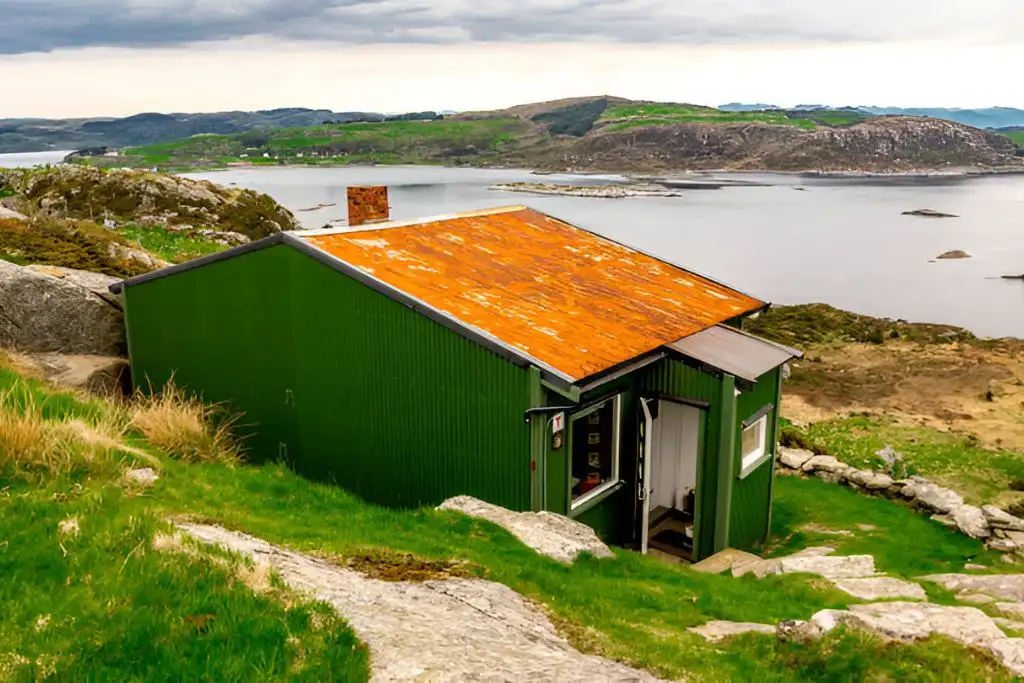
Best Hotels In Stavanger Sentrum
Stavanger’s city centre, known as Sentrum, is an ideal place to stay for easy access to attractions. The Hotel Victoria is a beautiful Victorian-style hotel on the waterfront. It provides stunning views and is close to the Stavanger Maritime Museum. The Thon Hotel Stavanger is another excellent choice. It’s centrally located and offers modern rooms with comfortable amenities. For those seeking luxury, the Radisson Blu Atlantic Hotel stands out. It features an indoor pool, fitness centre, and rooms with city views.
Boutique Stays And Budget-Friendly Options
Travellers looking for unique experiences can try boutique hotels in Stavanger. Comfort Hotel Square offers stylish rooms with a contemporary design. It’s perfect for those who appreciate modern aesthetics. Budget-conscious visitors have options too. Stavanger Bed & Breakfast provides affordable rooms in a cosy setting. It’s a great choice for backpackers or those watching their spending. Hostels are another wallet-friendly option. Stavanger Vandrerhjem St. Svithun offers dormitory-style rooms and private rooms at reasonable rates.
Where We Stayed In Stavanger
During our visit, we chose to stay in Gamle Stavanger, the old town. This area is charming with its white wooden houses and cobblestone streets. We booked a room at a small guesthouse. It gave us an authentic local experience. The location was perfect for exploring the city on foot. Our host provided helpful tips about nearby restaurants and attractions. This personal touch made our stay in Stavanger even more memorable.
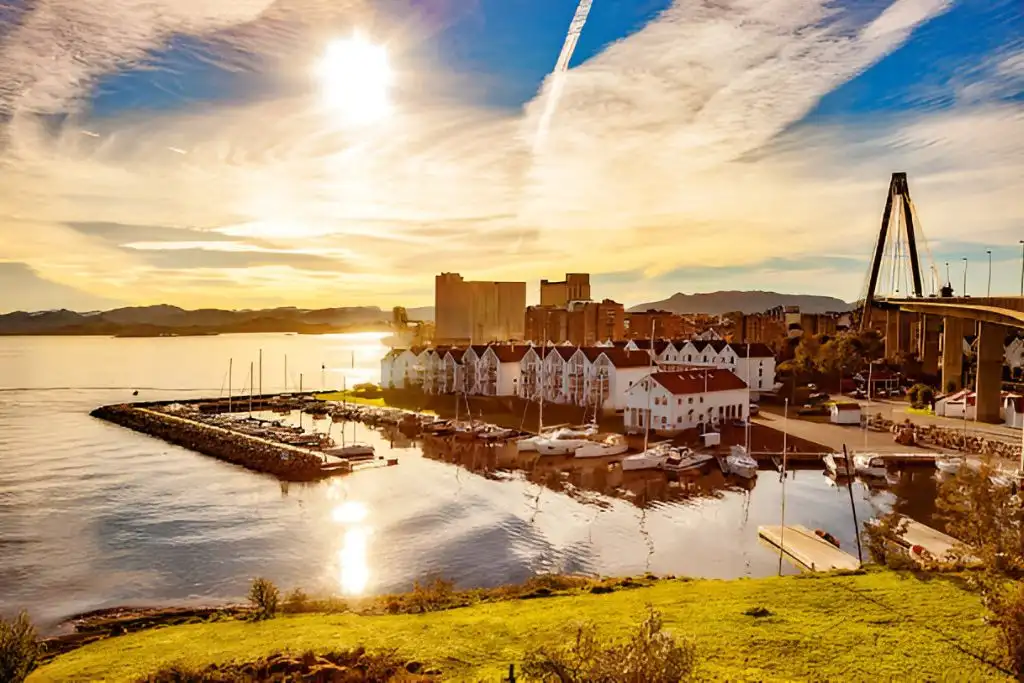
Morning In Stavanger
Stavanger’s mornings offer a charming blend of history and modern city life. Visitors can explore centuries-old wooden houses, stroll through quaint streets, and enjoy local cafés.
Exploring Old Stavanger
Old Stavanger, known as Gamle Stavanger, is a historic area with over 170 wooden buildings from the 18th and 19th centuries. This well-preserved neighbourhood sits on a hill overlooking the harbour. Visitors can wander the narrow cobblestone streets and admire the white-painted houses with their colourful gardens. The area gives a glimpse into Stavanger’s past as a fishing village. Many buildings now house museums, galleries, and craft shops. The Norwegian Canning Museum is a popular stop, showcasing the city’s sardine canning history.
A Walk Through Europe’s Best-Preserved Wooden Houses
Stavanger’s wooden houses are considered some of the best preserved in Europe. These structures date back to the 1700s and 1800s. The houses feature classic Norwegian architectural elements like steep roofs and small-paned windows. Many still have their original interiors intact. Guided walking tours of Old Stavanger are available. These tours provide in-depth information about the area’s history and architecture.
Exploring Local Shops And Cafés In The Area
Old Stavanger is home to many unique shops and cosy cafés. Visitors can browse artisan craft stores, boutiques, and art galleries. Local cafés serve traditional Norwegian treats like cinnamon buns and strong coffee. Some popular spots include Boker og Borst and Sjokoladepiken. Many shops sell locally-made goods such as woollen sweaters, ceramics, and handmade jewellery. These make great souvenirs or gifts. Visitors can also find fresh produce and local specialities at the nearby Stavanger Fish Market, open daily in the harbour area. Exploring Old Stavanger feels like discovering the unique things to do in Buenos Aires, with its rich local flavour and charm.
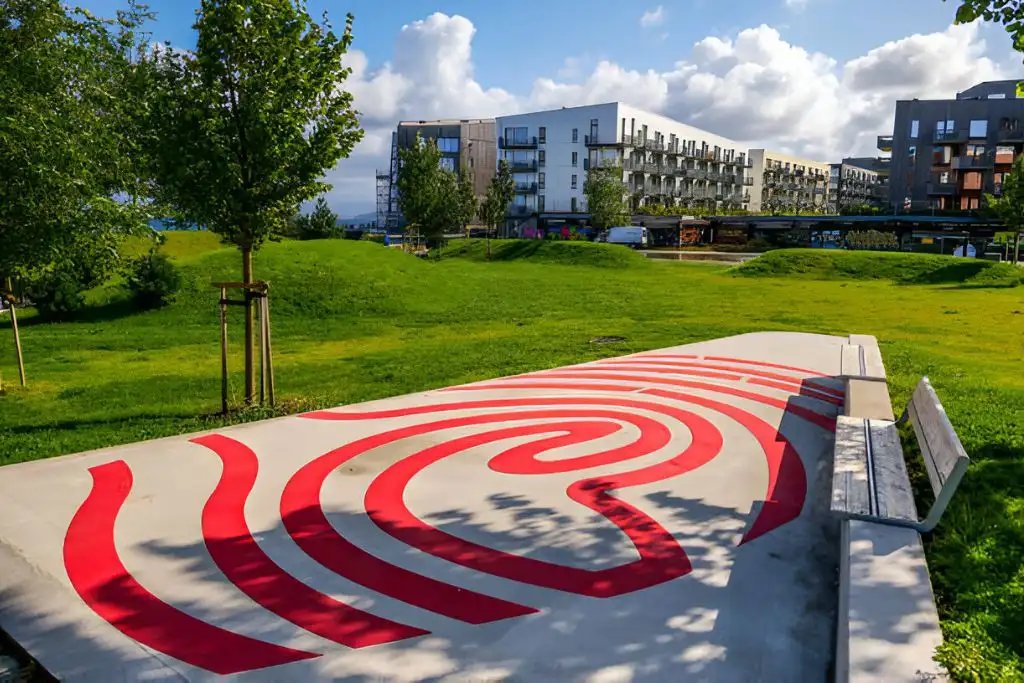
Exploring Stavanger Harbour
Stavanger Harbour is a vibrant hub of activity and history. Its scenic waterfront offers a glimpse into the city’s maritime past and present, with stunning views and photo opportunities.
Strolling Along The Harbour
The harbour promenade is perfect for a leisurely walk. Old warehouses line the waterfront, now home to shops and cafes. Colourful wooden buildings reflect in the calm waters. Ships of all sizes dock here, from small fishing boats to large cruise liners.
Key sights include:
- The Fish Market
- Statue of the city’s founders
- Modern art sculptures
Benches dot the walkway, ideal for resting and people-watching. The area buzzes with locals and tourists alike, especially on sunny days.
Historical Significance Of Stavanger Harbour
Stavanger Harbour played a crucial role in the city’s growth. It was a major port for herring fishing in the 1800s. Later, it became important for Norway’s oil industry.
Key historical points:
- 1125: Stavanger founded as a trading port
- 1800s: Herring boom transforms the harbour
- 1969: Oil discovered in the North Sea
Old cannons and anchors serve as reminders of the harbor’s naval past. The Petroleum Museum near the harbour tells the story of Norway’s oil era.
Tips For Capturing The Best Views And Photos
Stavanger Harbour offers many spots for great photos. Early morning or late afternoon light creates a golden glow on the water. Clear days provide the best visibility.
Best photo locations:
- Valberget viewpoint
- Gamle Stavanger (Old Town) overlooking the harbour
- From a boat tour in the fjord
For unique shots, try capturing reflections in the water. Include colourful boats or buildings in your frame. A wide-angle lens helps capture the harbour’s full scope. Remember to respect locals and ask permission before photographing people up close.

Midday In The City
Stavanger offers exciting midday activities for visitors. The Norwegian Petroleum Museum stands out as a top attraction with its educational exhibits and family-friendly features.
Discovering Norwegian Petroleum Museum
The Norwegian Petroleum Museum sits on the waterfront in Stavanger. It tells the story of Norway’s oil industry. The museum’s design looks like an offshore platform. Inside, you’ll find interactive displays and real equipment from oil rigs. Visitors can learn about drilling techniques and oil production. The museum also covers the impact of oil on Norway’s economy and society.
What To Expect At The Norwegian Petroleum Museum
The museum offers a mix of history and technology. Exhibits show the challenges of offshore work. You can try your hand at virtual drilling or explore recreated offshore living quarters. There’s a large model of an oil platform that visitors can walk through. This gives a real sense of scale. The museum also has films and presentations about oil exploration. Guided tours are available for those who want more detailed information.
Family-Friendly Activities And Educational Exhibits
The Norwegian Petroleum Museum caters well to families. Kids can enjoy hands-on activities throughout the museum. There’s a play area where children can dress up as oil workers. Interactive games teach about energy and the environment. These make learning fun for young visitors. The museum also has a cinema showing educational films. For adults, there are in-depth exhibits on Norway’s oil history. These cover technical, economic, and environmental aspects of the industry. For those planning family trips, the museum is one of the Best Places to Travel for Beginners, offering an educational yet entertaining experience for all ages.

Lunch By The Fjord
Stavanger offers stunning fjord views paired with delicious local cuisine. Visitors can enjoy fresh seafood and traditional Norwegian dishes while taking in the breathtaking scenery.
Top Local Eateries With A Fjordside View
Stavanger features several restaurants with stunning fjord views. Fisketorget, located at Vågen Bay, offers fresh seafood and Norwegian specialities. Bevaremegvel provides cosy dining with panoramic fjord views and a focus on locally sourced ingredients. For an upscale option, RE-NAA Matbaren serves gourmet Norwegian cuisine with a fjordside setting.
Personal Recommendations
Fisketorget’s fish soup, rich with fresh seafood and herbs, is a visitor favourite. Pasha offers a unique blend of Turkish and Norwegian cuisine, while Skagen is loved for its harbour views and mix of Norwegian and international dishes.
Hidden Gems
Café Sting in the old town offers light lunches and coffee with fjord glimpses. For a unique experience, Almannajuvet Zinc Mine Café provides simple local fare set against dramatic fjord landscapes. Lysefjord boat tours often stop at secluded restaurants serving fresh, local meals with breathtaking views.
Afternoon Adventure
Stavanger offers thrilling outdoor experiences for nature lovers and adrenaline seekers. The region’s stunning landscapes provide the perfect backdrop for unforgettable adventures.
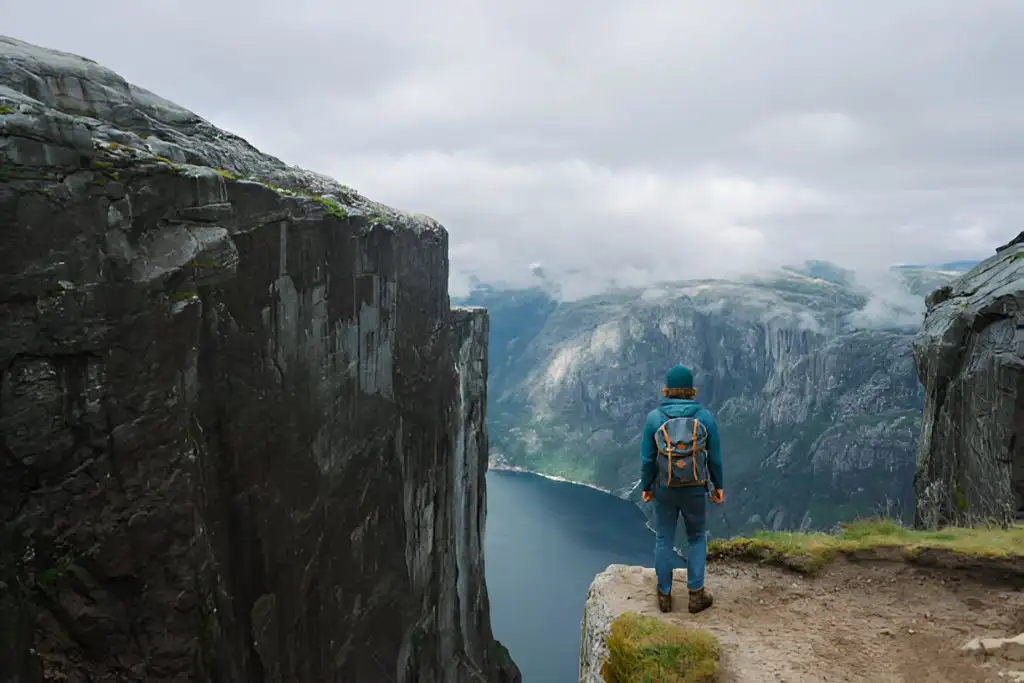
Hiking To Preikestan
Pulpit Rock, near Stavanger, is a must-see attraction. The 2-4 hour hike to Preikestolen is moderately difficult and well-marked, offering stunning views of Lysefjord from the cliff top. Starting at Preikestolen Mountain Lodge, the trail winds through forests and rocky terrain, with a narrow, steep section near the summit. At the top, enjoy panoramic views and photo opportunities from the 604-meter cliff edge.
Tips For A Successful Hike To Pulpit Rock
Proper preparation is key for a safe and enjoyable hike to Preikestolen. Here are some essential tips:
- Wear sturdy hiking boots with good ankle support
- Bring plenty of water and snacks
- Pack warm, waterproof layers as weather can change quickly
- Start early to avoid crowds and ensure enough daylight
- Check weather conditions before setting out
- Stay on marked trails and respect safety barriers
- Allow 4-5 hours for the round trip, plus time at the top
Hikers should be in good physical condition. The trail has some steep and rocky sections. Taking breaks and pacing yourself is important.
A Guide to Hiking Kjeragbolten
For a more challenging adventure, hike Kjeragbolten, known for its famous boulder wedged between cliffs. The 6-hour hike includes steep climbs and chains for assistance. At the top, brave hikers can stand on the boulder for a thrilling photo. Attempt this hike only in good weather with proper gear, or opt for a guided tour.
Adventure Seekers
Stavanger offers various outdoor activities for thrill-seekers. Kayak tours explore fjords, rock climbing is available with local guides, and paragliding offers aerial views. Mountain biking trails also cater to all skill levels, with rentals and guided options available.
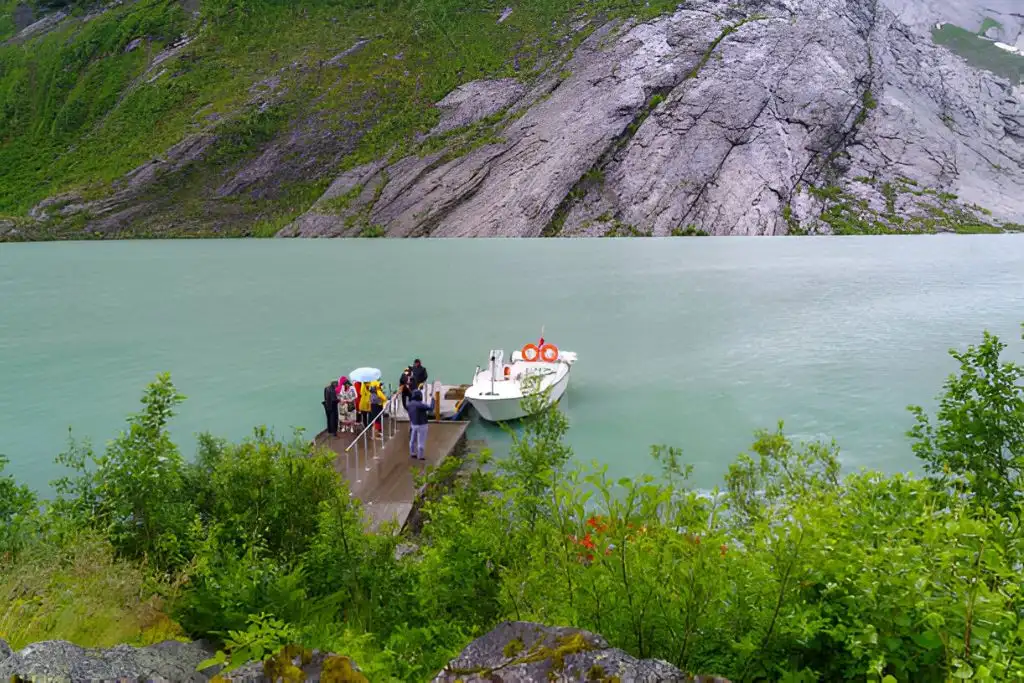
Visit To Sverd I Fjell
Sverd i fjell, or Swords in Rock, is a striking monument near Stavanger. The three giant bronze swords stand as a symbol of Norway’s unification and Viking history.
What Are The Swords In Rock?
Sverd i fjell is a monument located at the end of Hafrsfjord. It consists of three massive swords planted into solid rock. The swords commemorate the Battle of Hafrsfjord in 872 AD. This battle united Norway under one king, Harald Fairhair. Each sword represents a different aspect: peace, unity, and freedom. The largest sword stands 33 feet tall. The hilts are modelled after swords found across Norway. Fritz Røed created this impressive monument. It was unveiled in 1983.
How To Get To Sverd I Fjell By Bus Or Car
Sverd i fjell is about 6 miles southwest of Stavanger city centre. Visitors can reach it by bus or car.
By bus:
- Take bus number 16 from Stavanger.
- Get off at the Madlaleiren stop.
- Walk about 15 minutes to the monument.
By car:
- Drive southwest on Madlaveien.
- Turn right onto Møllebukta.
- Park in the nearby lot.
The drive takes about 20 minutes from central Stavanger. Parking is free and readily available.
Personal Experience
Visiting Sverd i fjell is a memorable experience. The monument’s size is impressive up close. The swords stand against a backdrop of Hafrsfjord. This creates stunning photo opportunities. Visitors can walk around the swords and touch them. The area is open and spacious, allowing for easy exploration. The site is peaceful, especially in the early morning or late evening. These times offer the best lighting for photos. Many visitors find the monument moving. It serves as a powerful reminder of Norway’s history and unity.
Cultural Immersion
Stavanger offers rich cultural experiences through its historic architecture and museums. Stavanger Cathedral, built in the 12th century, stands out with its Gothic and Romanesque designs, featuring intricate stone carvings and stained glass. Guided tours highlight the cathedral’s role in the city’s history. Old Stavanger preserves 18th-century wooden houses, creating a charming, historical atmosphere. The Norwegian Canning Museum adds insight into the city’s fishing industry, offering a hands-on cultural experience.
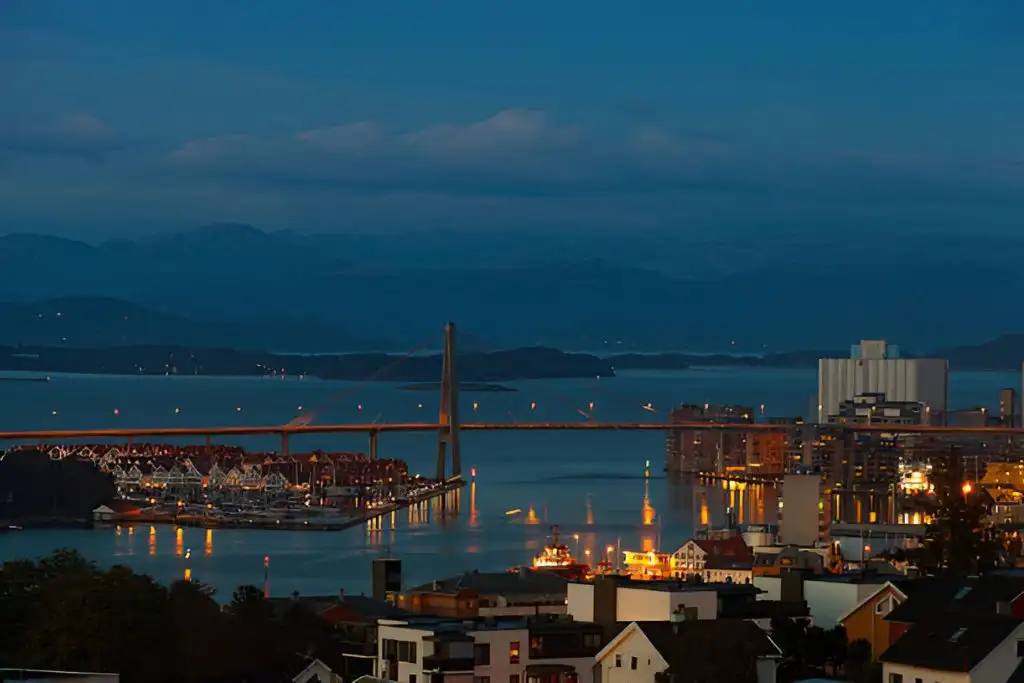
Evening in Stavanger
Stavanger’s nightlife comes alive as the sun sets. Visitors can enjoy a variety of dining options, from hearty meals at Døgnvill Burger to traditional Norwegian cuisine at Fisketorget or Renaa Matbaren. After dinner, stroll along the harbour, visit local bars, or join an evening fjord cruise for stunning coastal views. Stavanger’s compact size makes it perfect for an evening of exploration on foot.
Hidden Gems
Stavanger offers unique artistic experiences tucked away in unexpected places. From vibrant murals to quirky sculptures, the city’s art scene is a treasure trove waiting to be discovered.
Exploring Stavanger’s Art Scene And Street Art
Stavanger’s streets are an open-air gallery. Bold colours and striking designs decorate buildings throughout the city. The annual Nuart Festival brings world-class street artists to transform blank walls into masterpieces. Key areas to spot street art in Stavanger include Pedersgata and Øvre Holmegate. These neighbourhoods feature eye-catching murals that change the urban landscape. Local artists also contribute to the scene. Their works often reflect Norwegian culture and Stavanger’s maritime heritage.
Best Areas For Art Lovers And Culture Seekers
Gamle Stavanger (old Stavanger) is a hub for arts and crafts. This historic district houses numerous galleries and studios. Visitors can watch artisans at work and purchase unique pieces. The city centre hosts several modern art museums. The Stavanger Art Museum showcases both Norwegian and international artists. Its collection spans from the 1800s to today. For contemporary art, SKUR 2 gallery is a must-visit. It features rotating exhibits by emerging artists.
Unexpected Art Stops Throughout The City
Art pops up in surprising places across Stavanger. The Sverd i fjell monument at Møllebukta is a striking sight. Three giant swords stand planted in rock, commemorating Norway’s Viking history. Public spaces often feature quirky sculptures. Keep an eye out for “Broken Column” by Antony Gormley. This series of human figures is scattered throughout the city centre. The harbour area offers its own artistic touches. Colourful street furniture and installations bring life to the waterfront. Even bus stops in Stavanger can be works of art, with unique designs that reflect local culture.
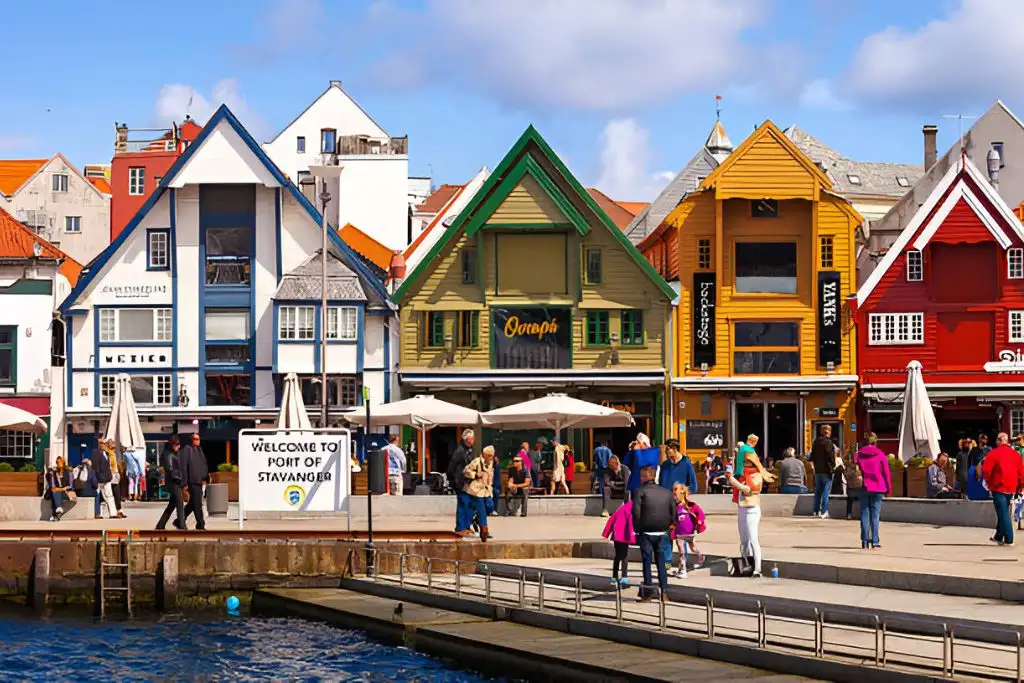
Shopping In Stavanger
Stavanger offers a mix of modern shopping centres and charming local markets. Visitors can find unique Norwegian items and international brands in the city’s compact centre.
Top Shopping Streets And Markets
The heart of Stavanger’s shopping scene is Kirkegata. This pedestrian street is lined with boutiques, cafes, and speciality shops. For fresh local produce and seafood, Fisketorget Stavanger is a must-visit. It’s both a fish market and restaurant on the waterfront. The Stavanger Storsenter is the city’s largest shopping mall. Located in the city centre, it houses over 70 stores. Farmers markets pop up regularly in Stavanger. These are great spots to find local products and meet vendors.
Souvenirs And Local Crafts To Bring Home
Norwegian wool products are popular souvenirs. Look for cosy sweaters, mittens, and blankets in traditional patterns. Local food items make great gifts. Try Norwegian chocolates, cheeses, or smoked salmon. Stavanger is known for its pottery. Handmade ceramics in earthy tones are available in many craft shops. For unique art pieces, visit Kunsthall Stavanger. This gallery showcases works by local artists. Trolls are iconic Norwegian figures. Small troll figurines make fun, quirky souvenirs.
Practical Tips For Your Day In Stavanger
Stavanger is a compact city best explored on foot, with buses available for longer trips. The Stavanger Tourist Office provides helpful maps and advice. Public transportation is reliable, and a day pass offers good value. To maximise a short visit, start early, plan your route, and focus on key attractions. Wear comfortable shoes for hilly, cobblestoned streets, and carry a waterproof jacket for changing weather. Combo tickets can save money at multiple sites, and Stavanger’s Old Town is best enjoyed on foot. For nature lovers, a fjord cruise offers stunning views. Carry some cash for smaller shops and cafes.
Wrapping Up
Stavanger offers visitors a perfect blend of history, culture, and natural beauty. Its charming old town, vibrant waterfront, and stunning nearby landscapes make it a captivating Norwegian destination.
Why Stavanger Is A Must-Visit Destination In Norway
Stavanger is a top Norwegian city known for its charming old town, maritime heritage, and vibrant culinary scene. Visitors can explore Gamle Stavanger’s historic streets, enjoy fresh seafood, and discover fascinating museums. The city also offers access to stunning hikes like Preikestolen. Art lovers will appreciate its colourful street art, especially during the annual Nuart Festival.
Keep Planning Your Trip to Norway: Other Nearby Destinations to Explore
After visiting Stavanger, many travellers want to see more of Norway’s beauty. Here are some nearby places worth checking out:
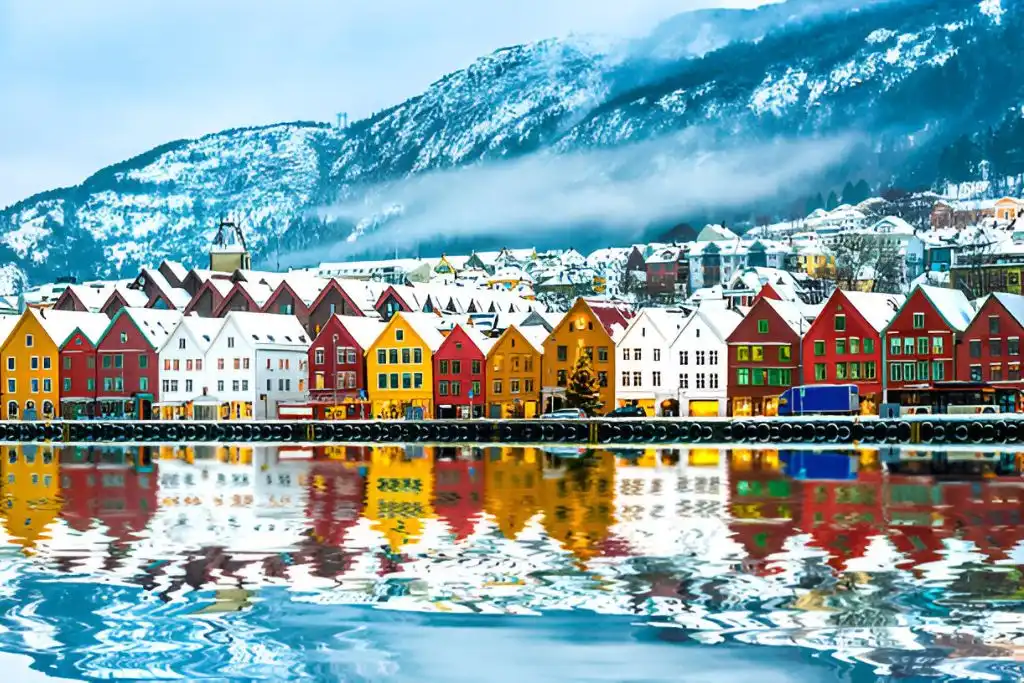
Bergen
A charming city about a 5-hour drive from Stavanger, Bergen is known for its colourful wooden houses and scenic harbour.
Preikestolen (Pulpit Rock)
Located 2 hours from Stavanger, this famous cliff offers stunning views of Lysefjord, making it a must-see for hikers and nature lovers.
Lysefjord
Take a boat trip through this beautiful fjord to experience Norway’s dramatic landscapes.
Kjeragbolten
A popular photo spot, this boulder wedged between two cliffs is a 3-hour drive from Stavanger.
Trolltunga
This iconic rock formation, about 5 hours from Stavanger, juts out over Lake Ringedalsvatnet, offering breathtaking views.
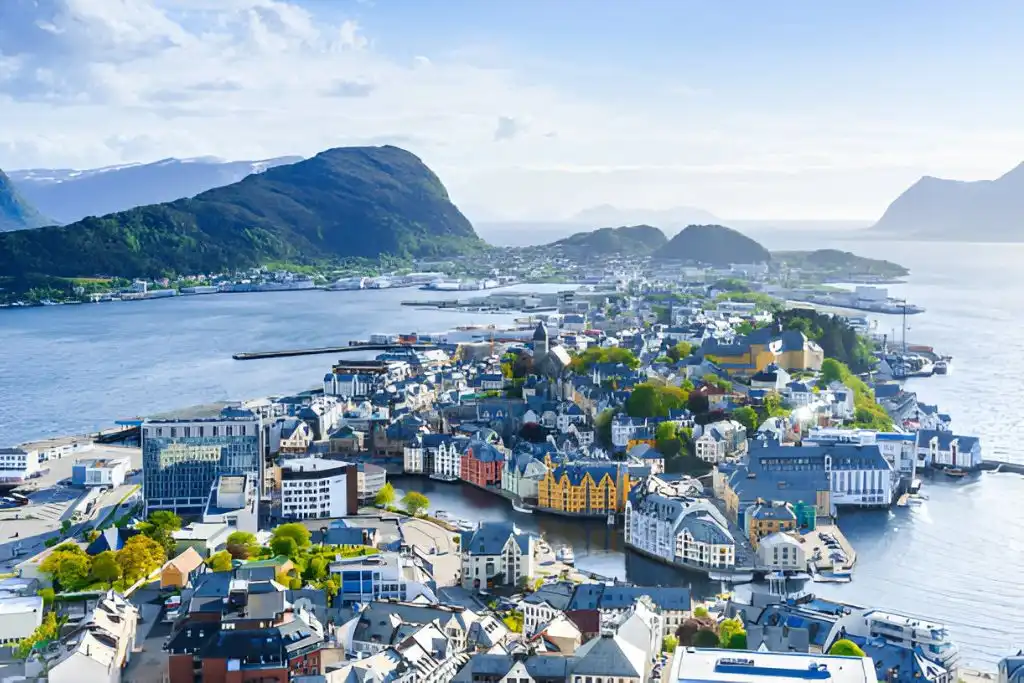
Ålesund
Known for its Art Nouveau architecture, this coastal town is further north but offers a unique Norwegian experience.
Hiking to Preikestolen vs. Kjeragbolten: Which Adventure is Right for You?
Preikestolen and Kjeragbolten are two popular hiking destinations near Stavanger, each offering stunning views with different levels of difficulty. Preikestolen, or Pulpit Rock, is a moderately difficult 8 km (5 miles) hike that takes 4-5 hours and rewards hikers with a flat platform overlooking Lysefjord. Kjeragbolten is a more challenging 12 km (7.5 miles) hike, taking 6–8 hours, featuring a boulder wedged between cliffs, 1000 metres above the fjord. Preikestolen is ideal for a shorter, easier hike, while Kjeragbolten offers a longer, more thrilling adventure. Both are best from May to October.
Frequently Asked Questions
What can I explore in Gamle Stavanger during a one-day visit?
In Gamle Stavanger, you can stroll through charming wooden houses and cobblestone streets, admiring 18th- and 19th-century architecture. Visit small museums and art galleries for insights into Stavanger’s history and culture.
What are the top activities to do in Stavanger, Norway?
Explore the vibrant street art scene, visit the Norwegian Canning Museum to learn about the sardine industry, and enjoy local beer at Lervig Local, a popular microbrewery.
How can I create a one-day itinerary for visiting Stavanger, Norway?
Start with a walk in Gamle Stavanger, visit the Norwegian Canning Museum, then take a Lysefjord cruise in the afternoon. End with dinner in the city centre.
Is there a suggested walking tour route for experiencing Stavanger’s main attractions?
Begin at Stavanger Cathedral, walk through Gamle Stavanger, head to the harbour, visit the Norwegian Petroleum Museum, and finish at Breiavatnet Lake.
What are some unusual attractions to visit in Stavanger?
Visit the Swords in Rock monument, commemorating the Battle of Hafrsfjord, or explore the Norwegian Canning Museum for a unique look into the city’s industrial past.
What are the recommended things to do in Stavanger when arriving from a cruise ship?
Explore Gamle Stavanger, visit the Norwegian Petroleum Museum, and take a short fjord cruise or a bus to the Swords in Rock monument for more adventure.

